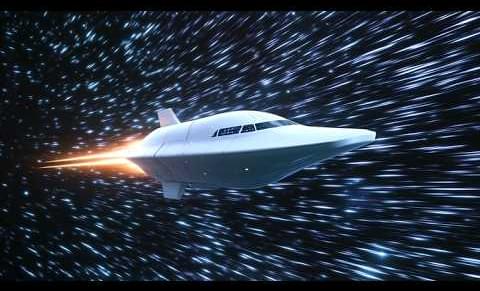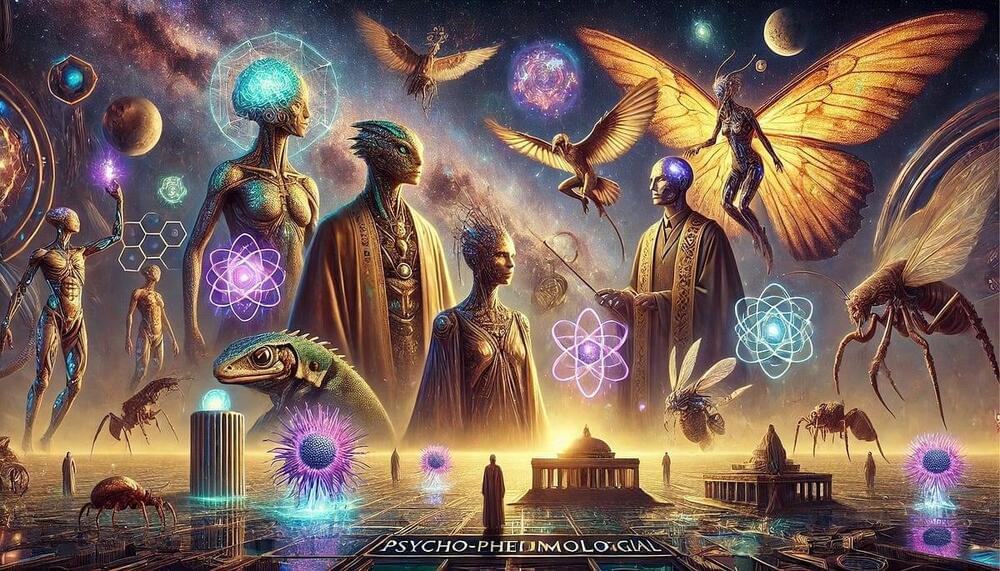Archive for the ‘space travel’ category: Page 2
Jan 4, 2025
Warp Drives: 7 Ways They Would Transform Our Future
Posted by Jose Ruben Rodriguez Fuentes in category: space travel

When will it be possible to develop warp drive technology?⬇️ Services I Use & Recommend: Descript: https://geni.us/OECB(AI-powered video/audio editing—perfect…
Jan 3, 2025
A long-term lunar infrastructure hub named after the object that created the moon
Posted by Genevieve Klien in category: space travel

Getting back to the moon is the primary goal of NASA’s Artemis program, but what do we do once we get there? That is the challenge tackled by a group of students at the University of Illinois Urbana-Champaign, who wrote a proposal for a lunar infrastructure module they call the Trans-lunar Hub for Exploration, ISRU, and Advancement—or THEIA, after the proposed object that crashed into the Earth that created the moon as we know it today.
Their submission was part of the NASA Revolutionary Aerospace Systems Concepts—Academic Linkage project, where teams from various academic institutions submitted papers focusing on the theme of Sustained Lunar Evolution for 2024.

Understanding Warp Drive.
The only way for human beings to visit other star systems is with warp drive technology. Remastered and Expanded, this lesson helps you understand the forces involved, and the serious scientists working to solve this problem.
Extra Credit Homework:
https://www.scientificamerican.com/article/star-treks-warp-d…w-physics/
Jan 2, 2025
How SpaceX Became the World’s Most Valuable Private Company
Posted by Chris Smedley in categories: business, Elon Musk, internet, space travel

How Elon Musk turned failure into $350 billion. Use code NEWSTHINK at http://nordpass.com/newsthink to get a FREE 3-month NordPass Business trial. No credit card required.
I highly recommend Walter Isaacson’s biography of Elon Musk: https://www.amazon.com/Elon-Musk-Walt?tag=lifeboatfound-20…
Continue reading “How SpaceX Became the World’s Most Valuable Private Company” »
Jan 2, 2025
Antimatter Power and Propulsion for Interstellar Spaceflight!
Posted by Dan Breeden in category: space travel

Antimatter power and propulsion systems may finally be within out grasp!
Scientists have discovered a new much more efficient way to make positrons! Antihydrogen fuel would change everything!
Extracredit:
NASA Antimatter research!
https://ntrs.nasa.gov/api/citations/20200001904/downloads/20200001904.pdf.
MSNBC Antimatter article!
https://www.msn.com/en-us/news/technology/how-antimatter-eng…r-BB1iIvo0
Continue reading “Antimatter Power and Propulsion for Interstellar Spaceflight!” »
Jan 1, 2025
NASA Astronaut Captures Brilliant Red and Green Aurora in Earth’s Thermosphere from the ISS
Posted by Genevieve Klien in category: space travel

Photo credit: NASA / Matthew Dominick NASA astronaut Matthew Dominick captured this incredible image of a brilliant red and green aurora in Earth’s thermosphere from the International Space Station (ISS). It was taken from the SpaceX Dragon Endeavour spacecraft on Oct. 7, 2024 around 273 miles above the Indian Ocean. Expedition 72 Flight Engineer Matthew Dominick dedicated much of his personal time to photography, amassing nearly 500,000 photos of Earth as well as snapshots of life aboard the International Space Station. This is a very impressive feat considering that he traveled 99,708,603 total statute miles around our home planet. We.
Jan 1, 2025
NASA finds the fuel that will take us to Mars in 45 days: It’s better than hydrogen and plasma
Posted by Genevieve Klien in categories: innovation, space travel
NASA’s nuclear propulsion breakthrough promises Mars trips in 45 days. Combining nuclear and plasma systems boosts efficiency, safety, and interplanetary mission success.
Dec 31, 2024
Enjoy Apple TV+ for free the first weekend of 2025
Posted by Omuterema Akhahenda in categories: cosmology, space travel
Apple TV+ is ringing in the New Year by offering an all-access pass to customers all around the world. Enjoy Apple TV+ for free the first weekend of 2025 (January 3 through January 5), Apple TV+ will be free on any device where Apple TV+ is available. All you need is an Apple ID to see what all the buzz is about.
Kick off 2025 by streaming Apple’s acclaimed originals, including buzzy new seasons of “Silo,” “Shrinking” and “Bad Sisters,” the twisty, riveting “Presumed Innocent,” Golden Globe nominees “Slow Horses” and “Disclaimer,” and award-winning hits like “The Morning Show” and “Ted Lasso.” Plus, catch up on global phenomenon “Severance” before its second season debut; get your mind blown by celebrated sci-fi series like “Dark Matter,” “For All Mankind” and “Foundation”; discover movies for the whole family like “Fly Me to the Moon” and “The Family Plan”; and action-packed hit features like “Wolfs” and “The Instigators.”
Dec 30, 2024
Tachyons Explained: Faster-Than-Light Physics and the McGinty Equation
Posted by Dan Breeden in categories: cosmology, information science, particle physics, quantum physics, space travel

Tachyons, the hypothetical particles that travel faster than light, have long fascinated scientists and enthusiasts. In this video, we explore how the McGinty Equation (MEQ) serves as a groundbreaking tool in understanding these elusive particles. Delve into the world of quantum mechanics, fractal geometry, and gravity as we uncover the potential of tachyons to revolutionize science and technology. From their intriguing properties, such as imaginary mass and energy reduction at high speeds, to their implications for faster-than-light communication and interstellar exploration, this video is a journey into uncharted territories of physics.
We also discuss the quest to detect tachyons, innovative experimental methods, and the role of MEQ in guiding researchers. Could tachyons be the key to unlocking new dimensions, explaining dark matter and energy, or understanding the origins of the universe? Join us in this deep dive into the unknown and discover the potential future of tachyon research.
Continue reading “Tachyons Explained: Faster-Than-Light Physics and the McGinty Equation” »










